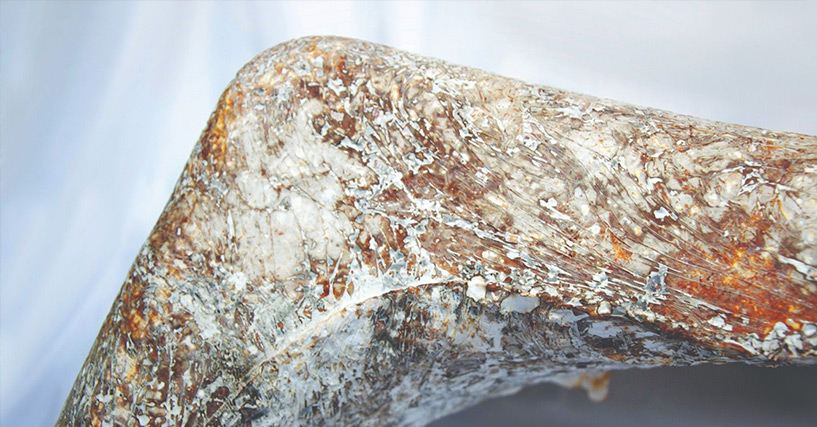
A research-driven dissertation project by Natalia Piorecka takes a closer look at mycelium as a living organism that is able to digest agricultural waste and bind it by acting as a natural glue. It observes mycelium as a substrate material and further explores its properties, capabilities and possible future application in building materials. A Report by Surfaces Reporter (SR).

Named MYCOsella - Growing the Mycelium Chair, Piorecka’s research examines the material through the form of a commonly known design object of the chair. Being tangible and a reliable object, the chair allows assessing mycelium as a material by observing its structural strengths and aesthetics. With the help of binding particles, mycelium creates a solid material that possesses a huge potential for various use.

Piorecka’s research further aims to develop a successful manufacturing methodology that would enhance the growth and allow it to fully disclose its characteristics. MYCOsella includes experiments using various substrates, growing techniques and explores various forms and strategies to successfully integrate the research into the manufacturing and growing of the chair. The mycelium chair has been tested by gradually challenging its structural limits.

The prototype has been given additional support from metal and wood. By using the mycelium substrate, a fully biodegradable MYCOsella Easy Chair piece is created. Furthermore, her project successfully created a series of three unique chairs – MYCOsella, MYCOsellam Brunsta and MYCOsellam Frosta – that were grown out of mycelium material. Each chair is a fully functional piece of furniture and it presents a broad set of mycelium qualities.

Piorecka believes that if taken into industrial scale, it will have a great impact on challenging the ways of perceiving production, manufacturing and designing.
Image credits: Green Product Award